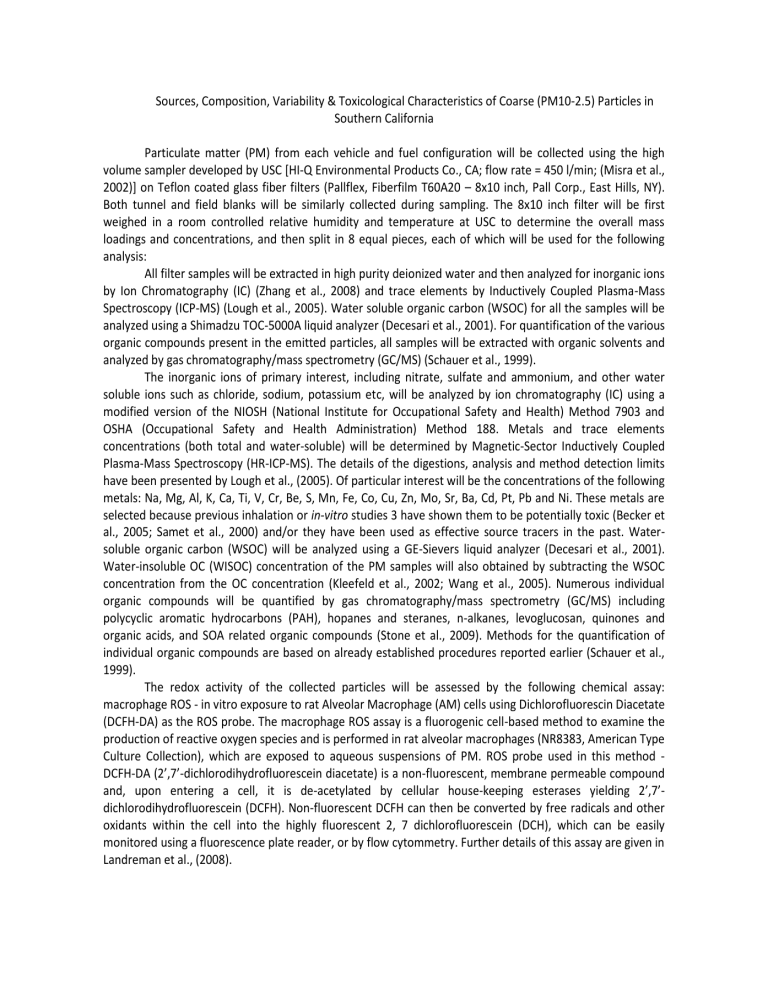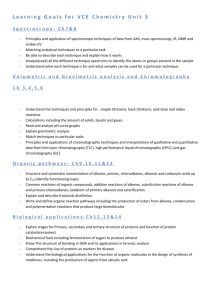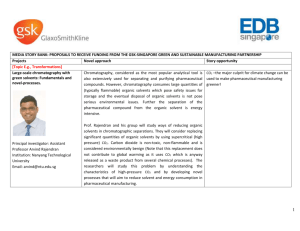Particulate matter (PM) from each vehicle and fuel configuration will

Sources, Composition, Variability & Toxicological Characteristics of Coarse (PM10-2.5) Particles in
Southern California
Particulate matter (PM) from each vehicle and fuel configuration will be collected using the high volume sampler developed by USC [HI-Q Environmental Products Co., CA; flow rate = 450 l/min; (Misra et al.,
2002)] on Teflon coated glass fiber filters (Pallflex, Fiberfilm T60A20 – 8x10 inch, Pall Corp., East Hills, NY).
Both tunnel and field blanks will be similarly collected during sampling. The 8x10 inch filter will be first weighed in a room controlled relative humidity and temperature at USC to determine the overall mass loadings and concentrations, and then split in 8 equal pieces, each of which will be used for the following analysis:
All filter samples will be extracted in high purity deionized water and then analyzed for inorganic ions by Ion Chromatography (IC) (Zhang et al., 2008) and trace elements by Inductively Coupled Plasma-Mass
Spectroscopy (ICP-MS) (Lough et al., 2005). Water soluble organic carbon (WSOC) for all the samples will be analyzed using a Shimadzu TOC-5000A liquid analyzer (Decesari et al., 2001). For quantification of the various organic compounds present in the emitted particles, all samples will be extracted with organic solvents and analyzed by gas chromatography/mass spectrometry (GC/MS) (Schauer et al., 1999).
The inorganic ions of primary interest, including nitrate, sulfate and ammonium, and other water soluble ions such as chloride, sodium, potassium etc, will be analyzed by ion chromatography (IC) using a modified version of the NIOSH (National Institute for Occupational Safety and Health) Method 7903 and
OSHA (Occupational Safety and Health Administration) Method 188. Metals and trace elements concentrations (both total and water-soluble) will be determined by Magnetic-Sector Inductively Coupled
Plasma-Mass Spectroscopy (HR-ICP-MS). The details of the digestions, analysis and method detection limits have been presented by Lough et al., (2005). Of particular interest will be the concentrations of the following metals: Na, Mg, Al, K, Ca, Ti, V, Cr, Be, S, Mn, Fe, Co, Cu, Zn, Mo, Sr, Ba, Cd, Pt, Pb and Ni. These metals are selected because previous inhalation or in-vitro studies 3 have shown them to be potentially toxic (Becker et al., 2005; Samet et al., 2000) and/or they have been used as effective source tracers in the past. Watersoluble organic carbon (WSOC) will be analyzed using a GE-Sievers liquid analyzer (Decesari et al., 2001).
Water-insoluble OC (WISOC) concentration of the PM samples will also obtained by subtracting the WSOC concentration from the OC concentration (Kleefeld et al., 2002; Wang et al., 2005). Numerous individual organic compounds will be quantified by gas chromatography/mass spectrometry (GC/MS) including polycyclic aromatic hydrocarbons (PAH), hopanes and steranes, n-alkanes, levoglucosan, quinones and organic acids, and SOA related organic compounds (Stone et al., 2009). Methods for the quantification of individual organic compounds are based on already established procedures reported earlier (Schauer et al.,
1999).
The redox activity of the collected particles will be assessed by the following chemical assay: macrophage ROS - in vitro exposure to rat Alveolar Macrophage (AM) cells using Dichlorofluorescin Diacetate
(DCFH-DA) as the ROS probe. The macrophage ROS assay is a fluorogenic cell-based method to examine the production of reactive oxygen species and is performed in rat alveolar macrophages (NR8383, American Type
Culture Collection), which are exposed to aqueous suspensions of PM. ROS probe used in this method -
DCFH-DA (2’,7’-dichlorodihydrofluorescein diacetate) is a non-fluorescent, membrane permeable compound and, upon entering a cell, it is de-acetylated by cellular house-keeping esterases yielding 2’,7’dichlorodihydrofluorescein (DCFH). Non-fluorescent DCFH can then be converted by free radicals and other oxidants within the cell into the highly fluorescent 2, 7 dichlorofluorescein (DCH), which can be easily monitored using a fluorescence plate reader, or by flow cytommetry. Further details of this assay are given in
Landreman et al., (2008).
Total and water-soluble fractions will be analyzed for the elements in collected PM samples. Subsections of the filter-collected PM will be extracted with 15 mL of high purity (18 mΩ) water. Extractions will be performed in 20 mL acid-leached, capped, polypropylene tubes, with continuous agitation for 16 hours at room temperature in the dark. Extracts will be filtered through acid-leached 0.22 μm polypropylene syringe filters prior to analysis by magnetic sector inductively-coupled plasma mass spectrometry ICP-MS (SF-ICPMS).
Numerous field/tunnel filter blanks and laboratory method blanks will be similarly processed (Zhang et al.,
2008). Estimates of uncertainty for each measurement can be derived by propagating the uncertainty (1 standard deviation, stdev) components from the SF-ICPMS analysis.







